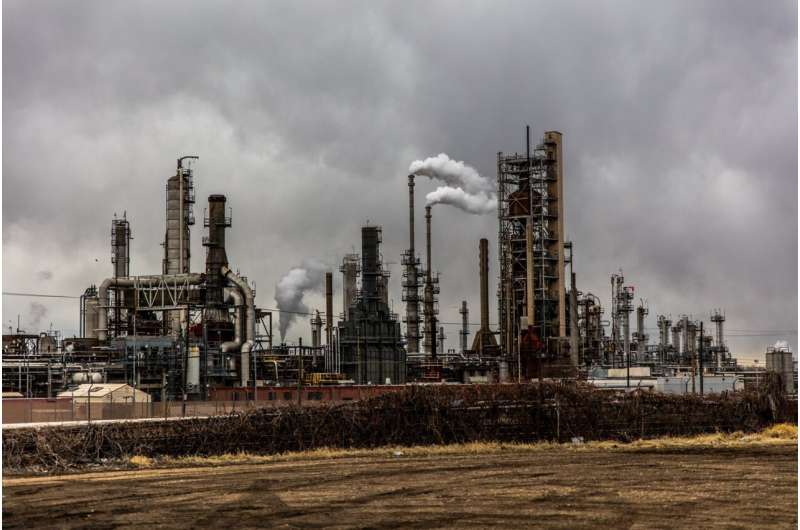This article has been reviewed according to Science X's editorial process and policies. Editors have highlighted the following attributes while ensuring the content's credibility:
fact-checked
trusted source
proofread
Modeling study: Linking carbon markets with an allowance exchange rate yields environmental, economic dividends

Carbon markets have become a critical policy tool to combat climate change. They allow firms that emit greenhouse gases to buy and sell the right to pollute, which gives the firms flexibility while also reducing carbon emissions at the lowest cost. A patchwork of dozens of markets exists around the world, often with drastically different prices for carbon credits. In a new paper, a University of Massachusetts Amherst resource economist demonstrates that linking fragmented carbon markets with an exchange rate has the potential to be a significant step toward forming a global climate policy.
Matt Woerman, assistant professor of resource economics at UMass Amherst, explores linking carbon markets using an allowance exchange rate, which denominates the compliance value of an emissions allowance differently in each program. Using simulation modeling, he finds that while an exchange rate may reduce emissions abatement in certain programs, it achieves greater emissions reductions and cost efficiencies overall.
"Climate change is a global problem," Woerman says. "Linking carbon markets with an allowance exchange rate is a great step toward a larger global climate policy that we need to solve climate change."
The modeling indicates that an exchange rate among linked carbon markets in various regions would move prices closer together and reduce pollution.
"This suggests that both regions would win, and the environment wins," Woerman says.
One potential downside of linking carbon markets is that each participating jurisdiction would give up a small amount of its sovereignty, but Woerman's research finds that the exchange rate would act as a cushion of sorts.
"It's this extra lever that allows policymakers to still retain some of that sovereignty and not force everything to be equal across the linked markets," he notes.
Woerman hopes the findings can be used to build political momentum toward forming larger coalitions to trade carbon credits.
"The next step is to think about how this work fits into a more dynamic framework in the longer run, particularly how we can use the allowance exchange rate perhaps as a first step toward a global market," Woerman says.
The paper appears in the Journal of Environmental Economics and Management.
More information: Matt Woerman, Linking carbon markets with different initial conditions, Journal of Environmental Economics and Management (2023). DOI: 10.1016/j.jeem.2023.102820
Provided by University of Massachusetts Amherst




















